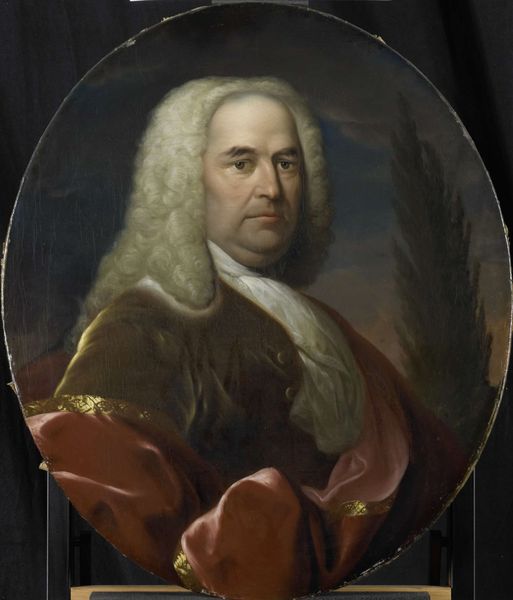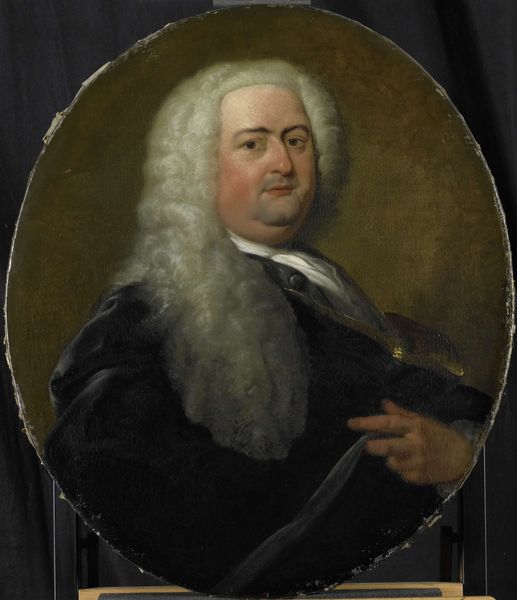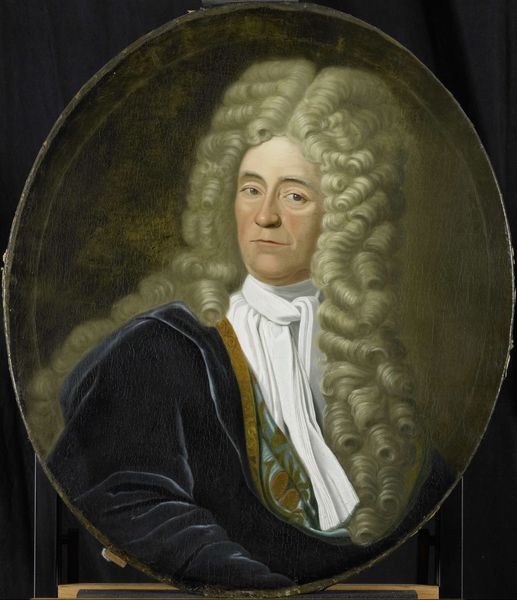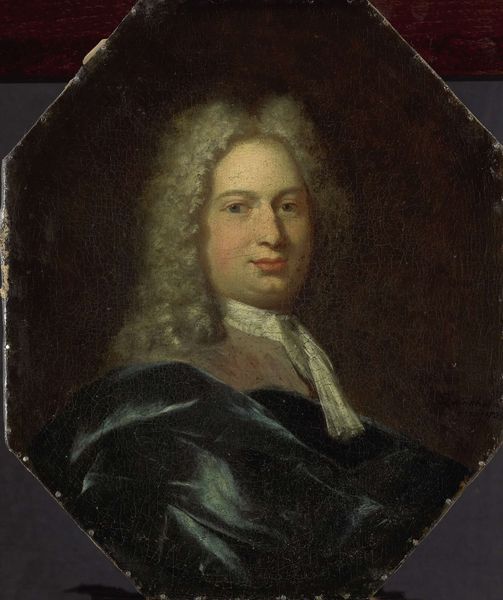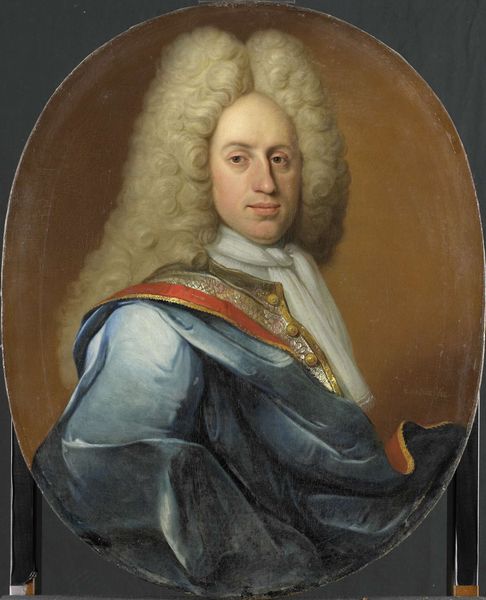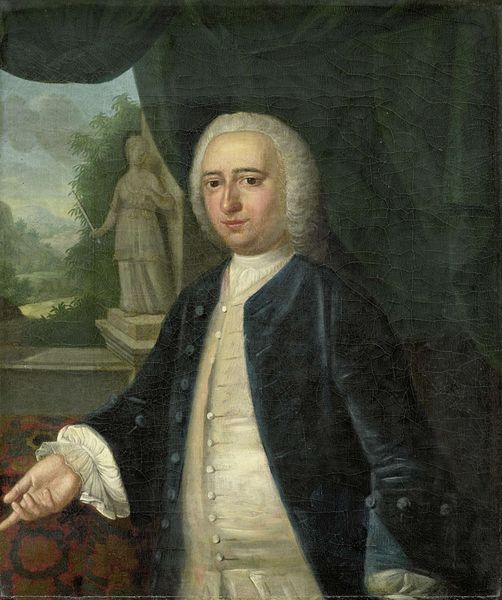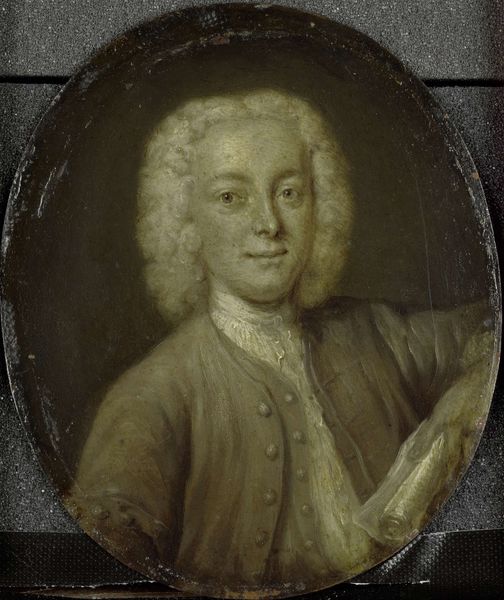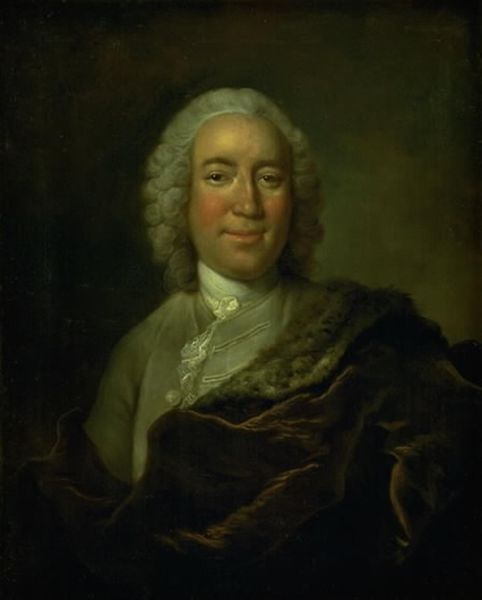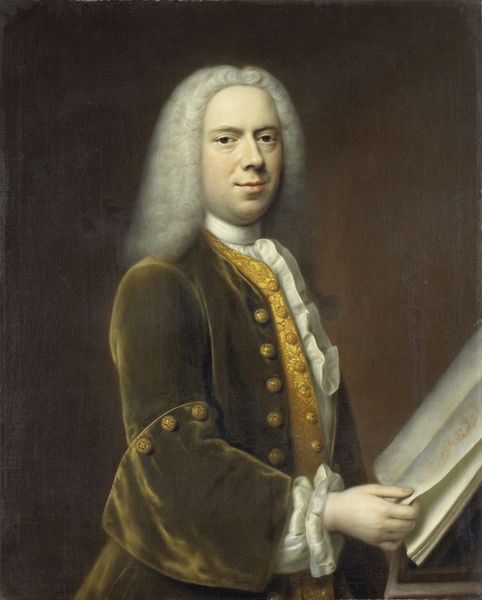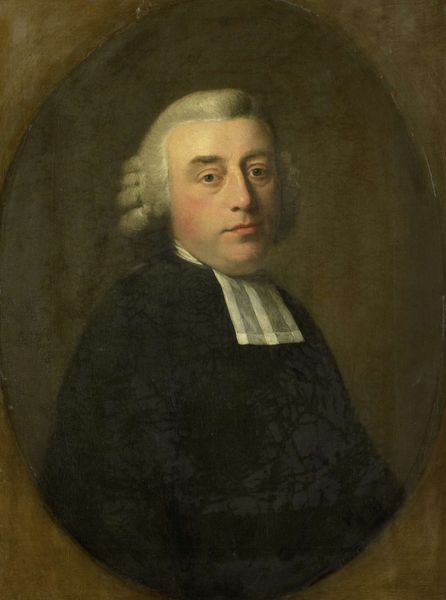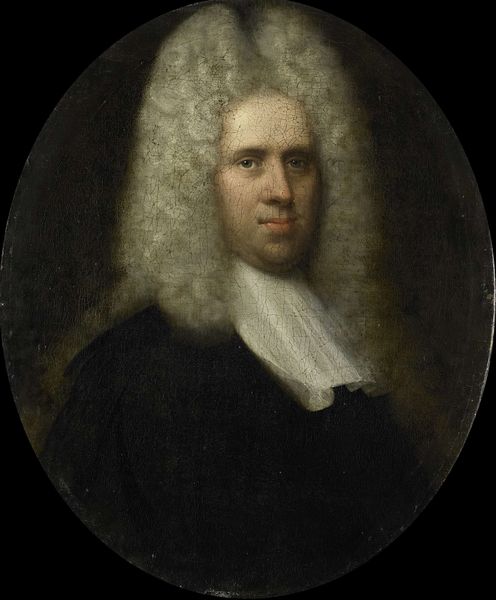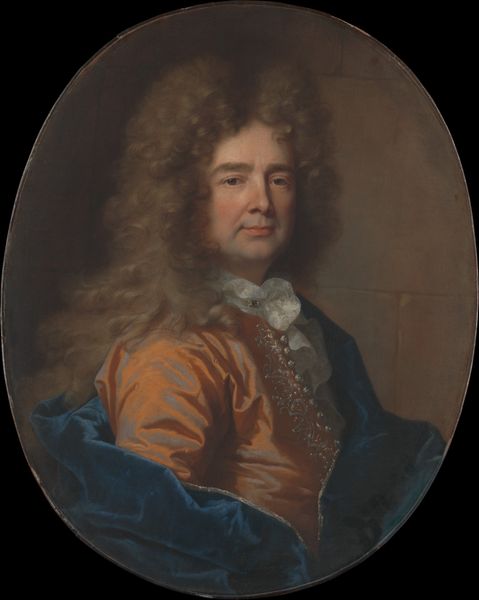
Portrait of Walter Senserff, Director of the Rotterdam Chamber of the Dutch East India Company, elected 1731 1731 - 1772
0:00
0:00
oil-paint
#
portrait
#
baroque
#
oil-paint
#
history-painting
#
academic-art
Dimensions: height 82 cm, width 68 cm
Copyright: Rijks Museum: Open Domain
Editor: Here we have Jan Maurits Quinkhard’s portrait of Walter Senserff, Director of the Rotterdam Chamber of the Dutch East India Company, elected 1731, likely painted between 1731 and 1772, in oil. It has a somber but confident air about it, don't you think? How would you interpret the visual message here? Curator: The sitter’s assured expression aligns with the Dutch East India Company's powerful presence in global trade and its impact on Dutch society. These portraits, prominently displayed in chambers and public spaces, acted as visual testaments to power, authority, and the republic's mercantile success. How might such displays have influenced public perception of the Company? Editor: So it’s a carefully constructed image, promoting a particular idea of leadership, not just an objective likeness. Curator: Exactly. The Baroque style, academic art practices—those details underscore the sitter's social standing and legitimize his role. Notice how the oval format, while conventional, subtly elevates Senserff, framing him as a figure of distinction. How does that frame change our understanding of him? Editor: It definitely makes him appear more important. Without knowing the context, I wouldn't have understood the layers of meaning. Curator: The study of historical and socio-political context shifts our understanding, revealing these portraits as key parts of Dutch society, communicating authority. Editor: I see now. Thanks to your insight, I understand much better how art participates in creating historical narratives. Curator: And understanding how art communicates these messages is so vital. Always think about the cultural implications of art!
Comments
No comments
Be the first to comment and join the conversation on the ultimate creative platform.
